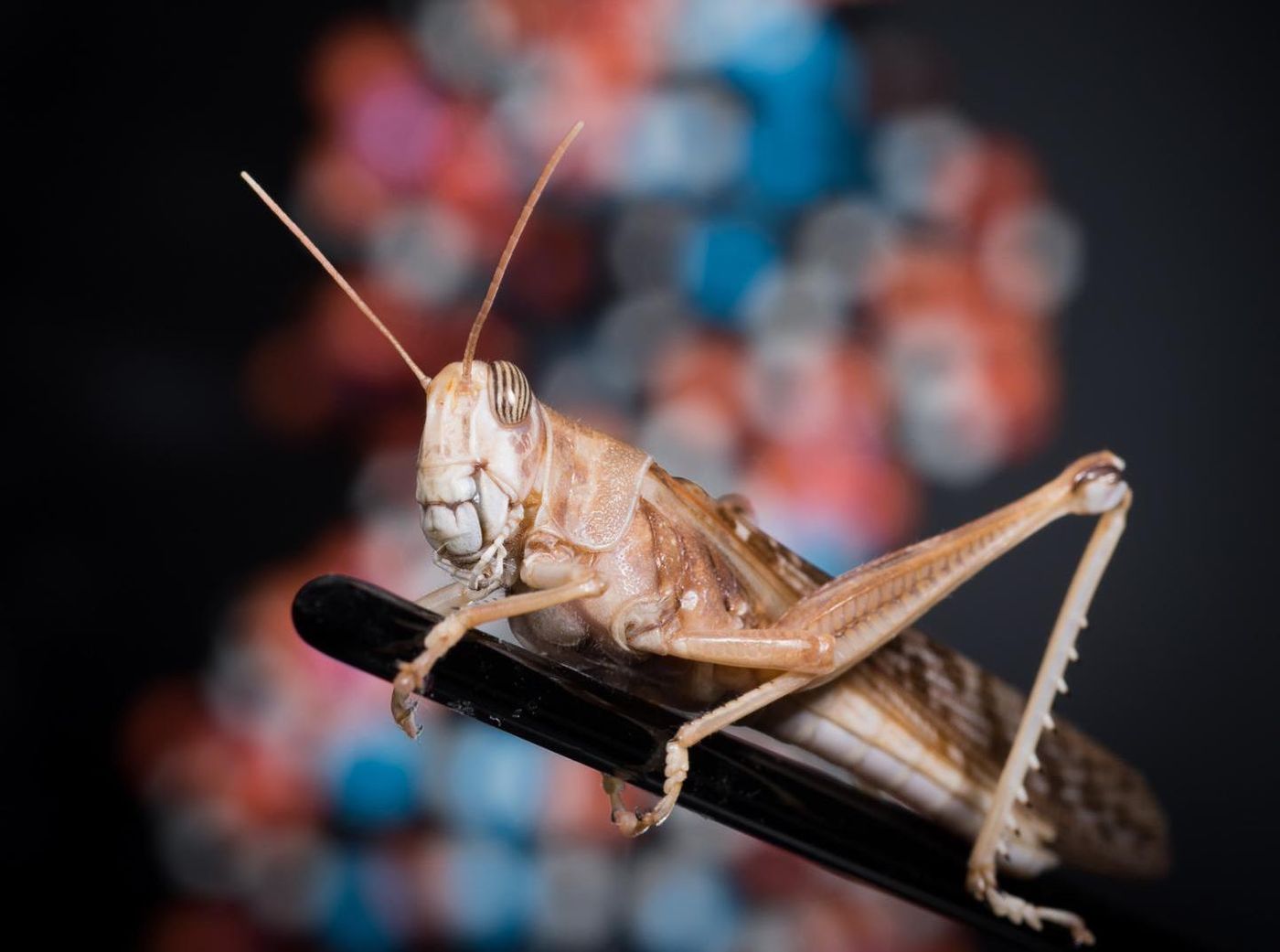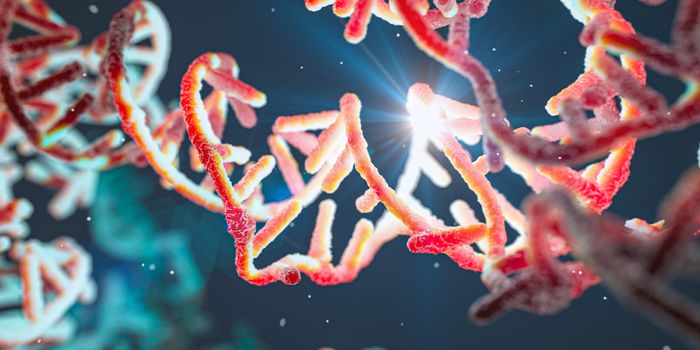Cracking the Code of a Locust Swarm
Desert locusts have become a major problem for some parts of the world over the last few years. Humans have long known about the devastating potential of locust swarms, which were recorded as far back as ancient Egypt. They are becoming a modern problem, however. Scientists are hoping that new genetic data will help us tackle these locust swarms; researchers have completed a first sequence of the massive desert locust genome.
A swarm, which might contain about 40 million locusts and could number in the billions, can move 200 kilometers a day and cover a few hundred square kilometers. It’s estimated that these insects can consume the same amount of food as 35,000 people would in only one day, and the damage they do has been compared to a major drought. These swarms threaten the security of food, especially of poor people, in 60 countries.
Normally these locusts can live a solitary life when their population density is low. But if heavy rainfall occurs and vegetation increases in deserts, these locusts can grow into huge colonies. As their food supply dwindles, huge numbers of insects go on the move in search of more. This phenomenon has been playing out in Yemen, Oman, and the horn of Africa where a normally arid climate is getting massive amounts of rainfall in the form of rare hurricanes. That leads to the proliferation of the insects, which then migrate.
"The incredible devastation that these voracious insects can cause to food crops and pastures affects the livelihoods of hundreds of thousands of farmers and exacerbates the risks of starvation for the wider population in already vulnerable regions,” said study co-author Dr. Tom Matheson.
This new study may enable the development of ‘intelligent pesticides’ that can target the locusts’ nervous systems in a precise way, killing them but sparing other organisms.
"The desert locust genome provides key information that could be a complete game-changer for the developing world, and a huge economic step forward for countries struggling to feed their populations,” added Matheson.
While some countries have been spraying insecticides to try to control the locust swarms, the insects are often able to simply move away from the offensive chemicals.
"Tackling locust infestations and controlling swarms will never be easy because of the challenging conditions across the huge areas affected, but with the right information and research at hand, we hope that future approaches can become more effective," said Matheson.
"If climate change causes locust plagues to become the 'new normal', we will need all hands on deck by way of in-depth research and improved technology to help in the fight to control swarms."
The locust genome is not small; it’s over 8.8 gigabases making it 2.8 times longer than the human genome.
"We do not yet understand the genetic instructions that make locusts behave so differently from ordinary grasshoppers, and to such damaging effect. Until now, a major stumbling block has been the lack of the desert locust genome sequence that holds the answer to what makes a grasshopper a locust,” noted study co-author Dr. Swidbert Ott.
"We hope that our data can facilitate the development of novel, more sustainable methods of managing swarm outbreaks. With the information in our research now available, there is a unique opportunity for innovators to create an intelligent pesticide that targets locusts, but not other insects crucial to the ecosystem, such as pollinators."
Sources: AAAS/Eurekalert! via University of Leicester, F1000 Research









